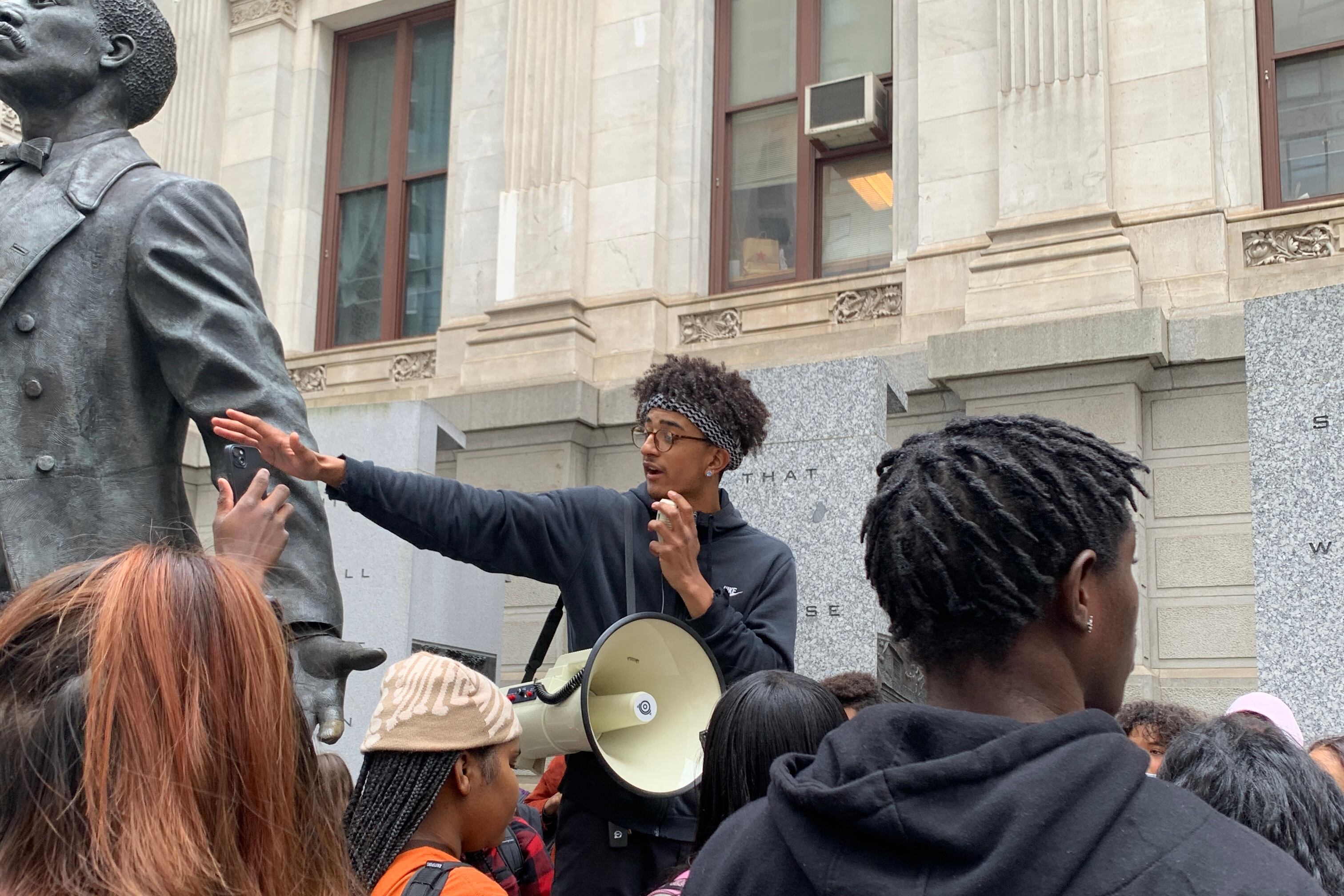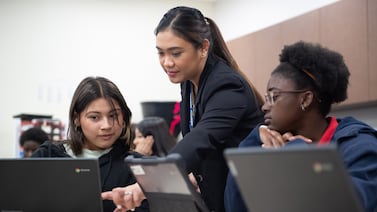A week before Philadelphia students are scheduled to decide where to enroll for ninth grade, 12 of the district’s selective schools still have a combined total of more than 700 open seats, many of which are likely to go unfilled.
The open seats, which the district reported in a statement Thursday, follow its implementation of a new lottery admissions system that was meant to bring more equity and opportunity to the process. But the system, which fully went into effect this school year, has also resulted in fewer students enrolling at many criteria-based high schools for the upcoming year. That trend has sparked concerns about forced teacher transfers, declining enrollment, and corresponding job cuts at those schools, as well as worries about some of the schools’ long-term viability.
The impact on faculty has led to several protests by students and teachers, one before the March 23 Board of Education meeting, and another on March 28 outside City Hall. The concerns are especially acute at themed and innovative high schools that serve mostly Black and brown students.
At its most selective high schools, including Masterman and Central, the enrollment historically has mostly consisted of white and Asian students, although there are signs that their demographics are changing significantly under the new system.
At its March meeting, the Board of Education announced the district would offer seats to 316 students who otherwise qualified for next year’s ninth grade in one or more of the schools but had not enrolled. The district subsequently held two information sessions to help fill those seats. But as of Thursday, just 61 of the 316 students had accepted spots.
Last month, Superintendent Tony Watlington acknowledged that the new process is flawed and said the district will try to improve it next year.
Watlington said he was reallocating $3 million from other parts of the district’s budget to minimize the loss of teachers. But he also said last month that principals ultimately make such staffing decisions based on available funding, a point the district has since reiterated.
Watlington said that only three criteria-based high schools would lose more than two teachers next year: Hill-Freedman World Academy, The Arts Academy at Benjamin Rush, and Girls High School, based on their teacher allotments and information from principals.
However, teachers from Science Leadership Academy–Beeber remain uncertain about how many teachers they could lose from their staff of 50.
Normally, Beeber would take 120 ninth graders, but for next year the projected number is about half that, said Alex Kopp, a math and computer science teacher at the school.
The lottery qualifies students based on grades, test scores (in years when they are available), attendance, and behavior. In past years, schools like Beeber were also able to interview students who came close to qualifying and appeared on paper to be a good fit for the project-based curriculum.
This year, however, they could not interview students to flesh out the class, he said. That change was part of the district’s effort to eliminate implicit bias from the admissions system.
If school staffing drops below a certain level, he might be unable to maintain his computer science and technology program.
Kopp said he respects equity as a goal for the new admissions process, especially for the most selective schools like Central and Masterman. But schools like Beeber could be adversely affected, he said, by “becoming less diverse and less able to serve students that would be highly successful” in their small, often project-based approach to learning. If that happens, “the school community suffers,” he said.
Among the 61 students among the 316 who decided to accept an offer to a selective school, the most popular were Arts Academy at Benjamin Rush, Creative and Performing Arts (CAPA) High School, Franklin Learning Center (FLC), and Saul, the state’s only high school that focuses on agriculture.
Beeber was among the other schools students could choose from. Those schools included Lankenau, Motivation, Hill-Freedman, the three Parkways — Northwest, Center City Middle College, and West — and Girls High.
Students, who can apply to up to five schools, must inform the district of their decision by April 14.
Video by WHYY Movers & Makers.
Dale Mezzacappa is a senior writer for Chalkbeat Philadelphia, where she covers K-12 schools and early childhood education in Philadelphia. Contact Dale at dmezzacappa@chalkbeat.org.






